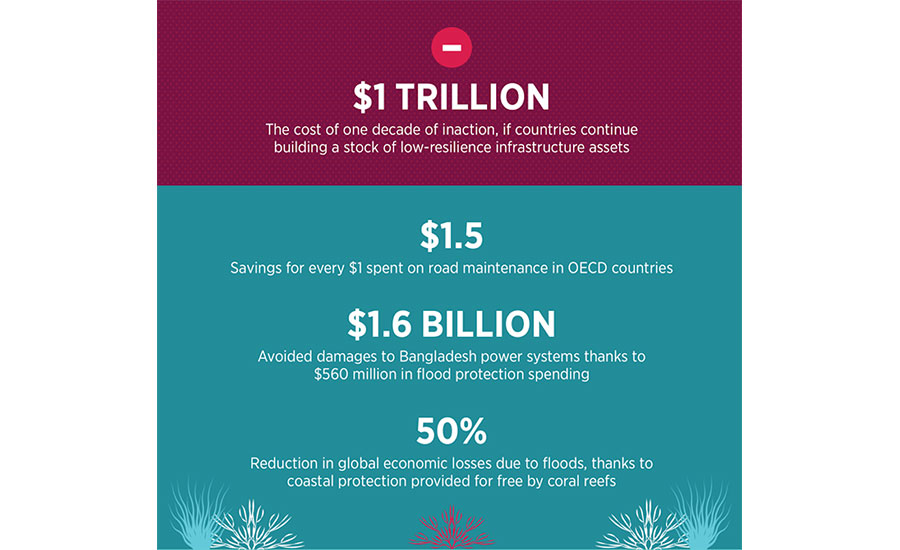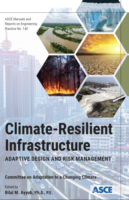Resilient infrastructure pays off four-fold for low - and middle-income countries and could save those countries $4.2 trillion over the life of the infrastructure, says a new report from the World Bank. Such investments become even more cost effective as the impacts of climate change worsen, according to the report, “Lifelines: The Resilient Infrastructure Opportunity.” The cost of inaction, however, is $1 trillion over the next decade.
Without climate change, resilient infrastructure saves $2 for every $1 spent under the median scenario but with climate change, the countries would save $4 for every $1 spent. "If the impacts are mild, it may be closer to $2," says Ferzina Banaji, a spokeswoman for the World Bank. "The real benefit-cost ratio may be much higher than the median suggests."
The report uses what might be the first high-level analysis of engineering options to improve resilience in the power, water and transportation sectors. Performed by Miyamoto International, engineers for the seismic and structural company calculated the cost of engineering improvements for EQ motion, liquefaction, wind, flood and landslides for 18 types of infrastructure, and how much those upgrades would reduce damages.
When researching the improvements, the team found it was difficult to calculate improvements for resilience when quality control on basic infrastructure was lacking. For instance, Indonesian earthquake codes are on par with the United States, but construction in the field is not to the same standard, noted Amir Gilani, one of the authors of the Miyamoto report.
The number one recommendation in the World Bank report is to “get the basics right,” through, planning, financing, regulations and enforcement. “A poorly maintained infrastructure asset cannot be resilient,” according to the World Bank report.
Infrastructure also cannot be looked at in a vacuum. Gilani says infrastructure failures have a cascading effect—if electricity goes down, pumps can’t operate and water systems are inoperable.
“It is cheaper and easier to build resilience if we look beyond individual assets, like bridges or electric poles, and understand the vulnerabilities of systems and users,” said Stephane Hallegatte, lead author of the report. “By doing so, entire systems can be better designed and with greater flexibility so that damages are localized and do not spread through entire networks, crippling economies at large.”
The lack of resilient infrastructure costs individuals and companies up to $390 billion a year in low- and middle-income countries—that’s in addition to the $18 billion in direct costs to power generation and other infrastructure because of natural disasters in those countries. In low- and middle-income countries, designs for more resilient assets in the power, water and sanitation, and transport sectors would cost between $11 billion and $65 billion a year by 2030—an incremental cost of around 3 % compared with overall investment needs, according to the report.
Some resilience investments might not be worth the cost. According to the report, increasing the flood resistance of a road would have an incremental cost of 3%, while increasing the flood resilience of a railway by elevating it could increase costs by 50%.
“Sometimes,” says Amir, “it is better to move, not rebuild.”
Other suggestions in the report include: better materials for wind turbines, cell phone towers, and transmission and distribution systems to increase their resistance to strong winds and extend their lifetime; increasing redundancy of components in water and wastewater treatment plants by adding backup components; and building higher dikes around water treatment plants and nuclear plants to protect them from floods.
The report says resilient construction and materials, in some instances, can lower the cost of building that asset, giving the example of a modular bridge with a deck incased in stainless steel. “This approach results in a significantly longer design life of up to 100 years with lower maintenance costs—a performance well beyond that achieved with the traditional in situ reinforced concrete,” according to the report.





Post a comment to this article
Report Abusive Comment